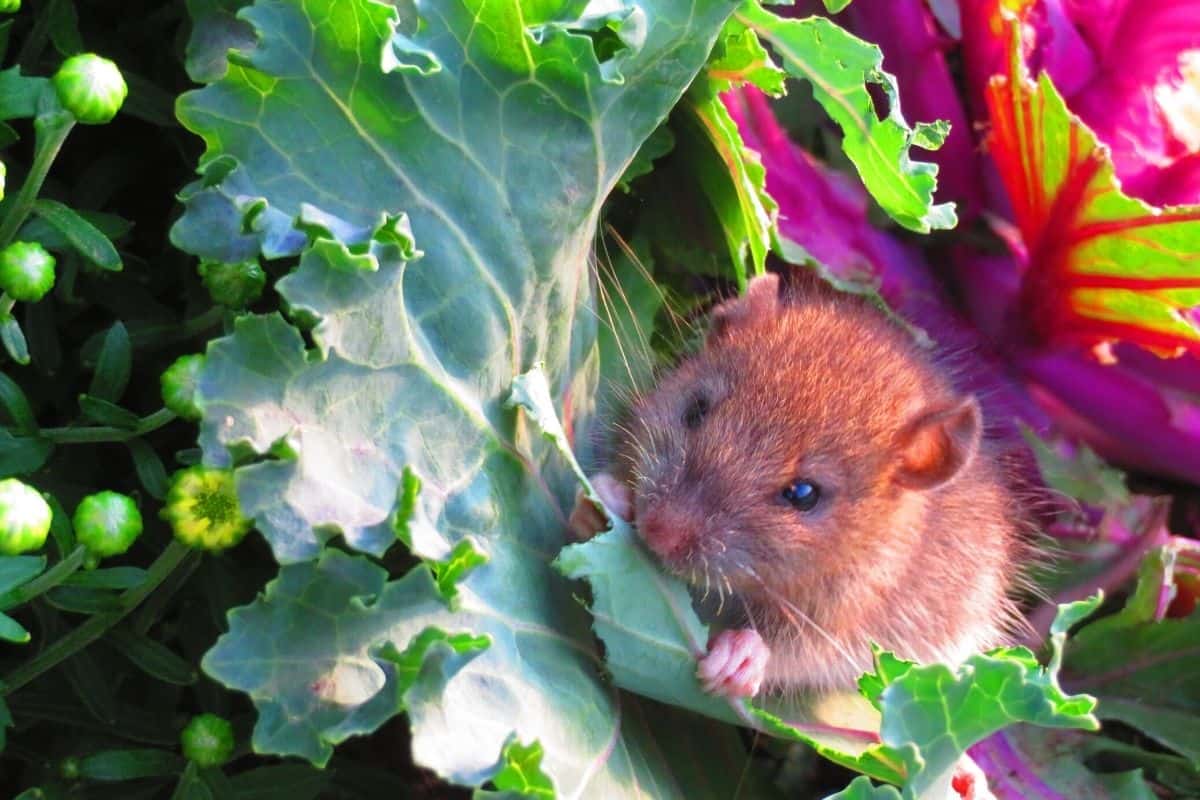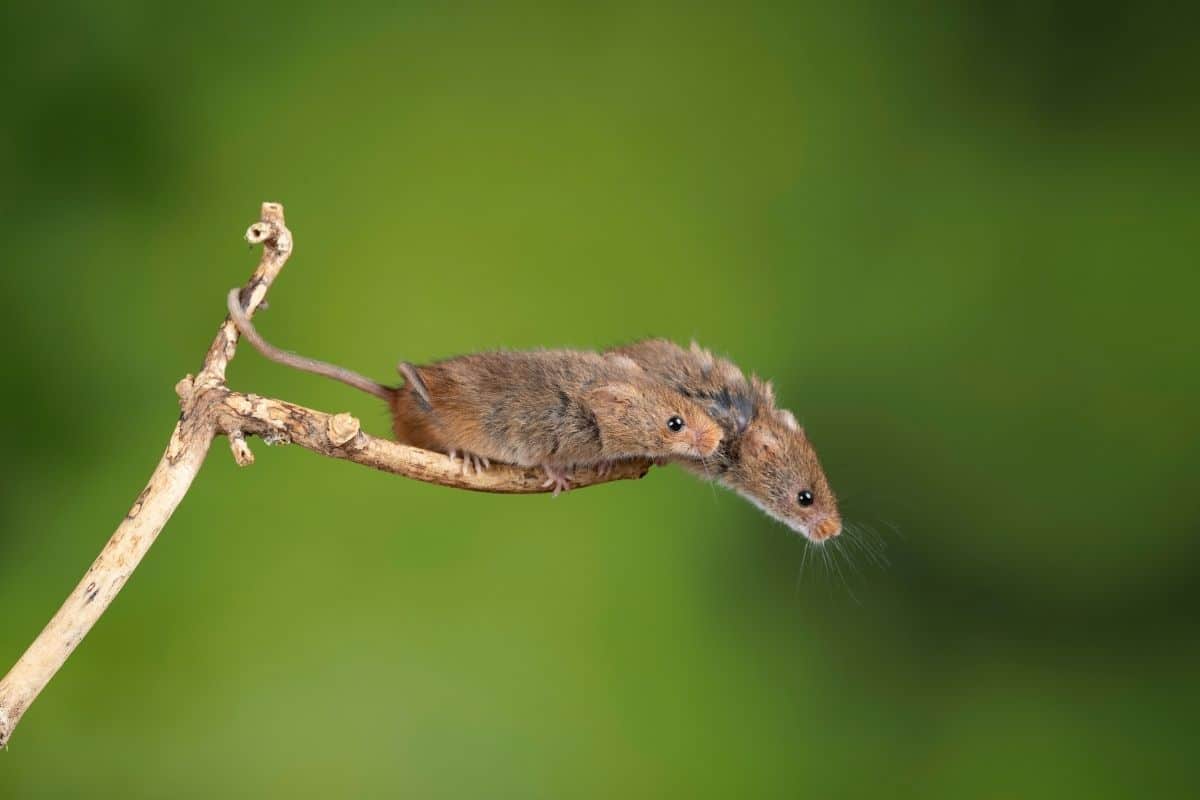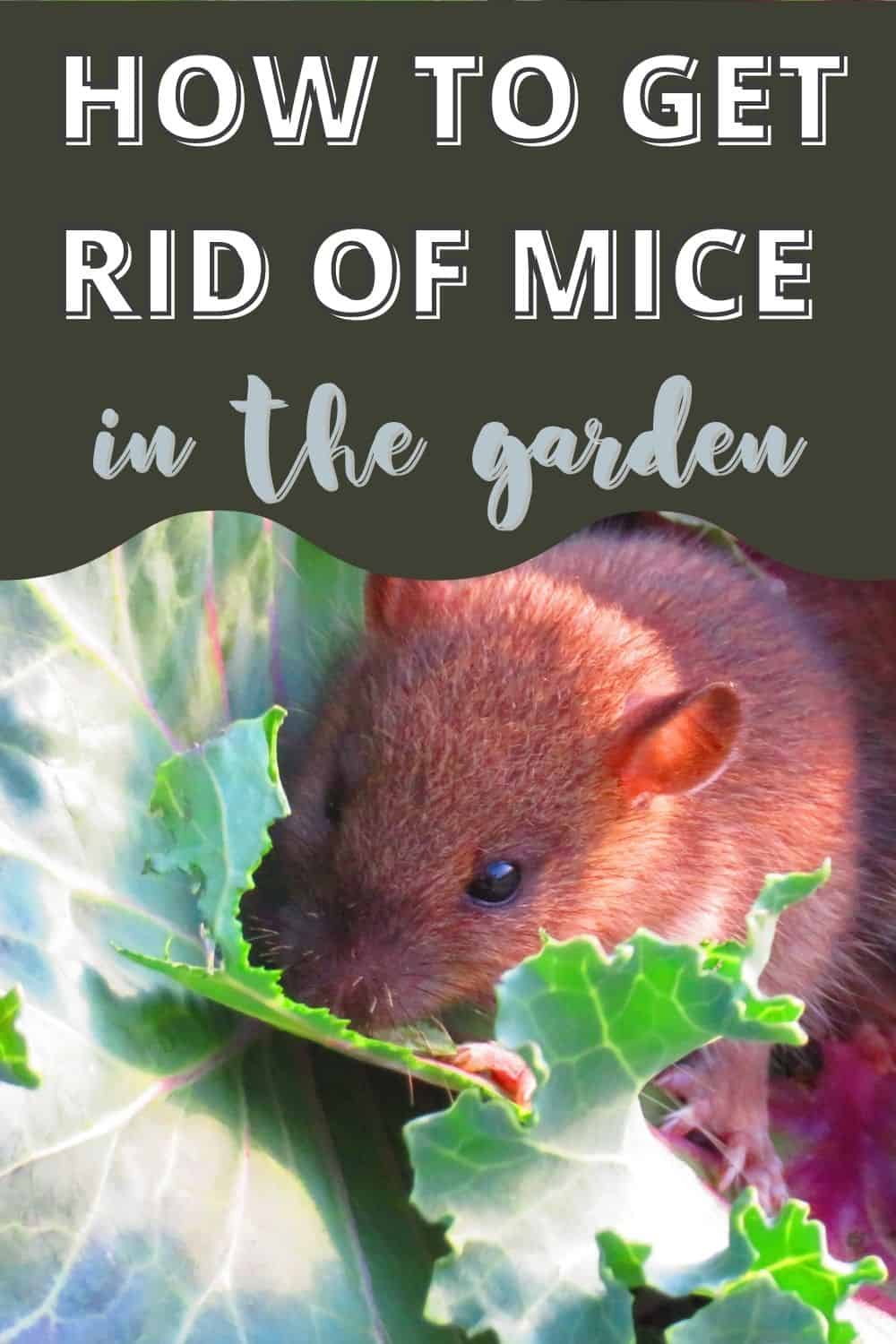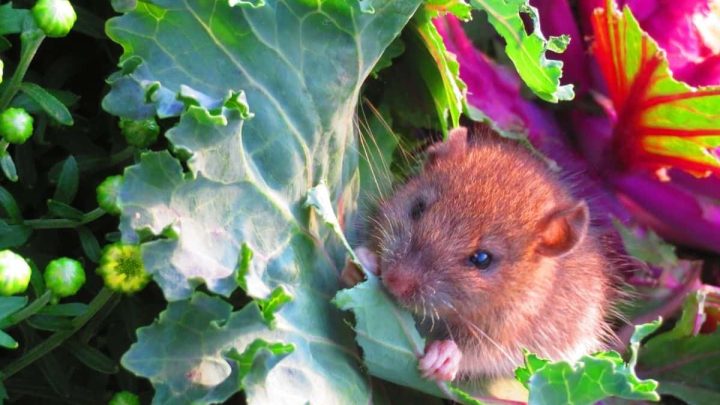Although commonly known for being indoor pests, mice can be a nuisance in the garden, too! But they can climb just about anything, swim, jump a foot in the air, and squeeze through any opening larger than a quarter of an inch – so how do you keep them out of your vegetable patch? We’ll take a look at how to properly identify mice and their damage and then explore how to get rid of mice in the garden.

How to Get Rid of Mice in the Garden
Mice are commonly confused with other rodents in the garden, including voles, moles, and chipmunks, so the first step in rodent control is to properly identify the pest.
How to identify mice
Mice average five and a half to seven inches long, with a tail the same length as the rest of the body (unlike voles, which have shorter tails: learn more about voles). They tend to be brown or gray, with some appearing nearly black. In addition to their long tails, mice can be distinguished from similar rodents by their large ears and eyes.
They typically live in bushy or grassy areas and nest in shallow burrows, densely vegetated locations, or other protected areas. Although they do not tunnel like moles or voles, mice will use old mole tunnels to travel underground. Otherwise, they use narrow surface runways that connect their nests to food sources.
What mouse damage looks like

Look for signs of nibbling from mice, evidenced by small scrape marks made by their teeth. Mice can severely damage young trees by gnawing on the bark and roots, and they bite into low-hanging beans, cucumbers, peas, tomatoes, and other ripening produce.
They also dig into and nibble on root vegetables like beets, carrots, parsnips, and potatoes.
In the winter, mice often dig up bulbs, nuts, and seeds to eat, and they may also feed on the foliage and tender bark of berry bushes, roses, and other shrubs.
How to control mice
1. Clean up the garden
As with many pests, cleaning up the garden is a great way to make it less hospitable to mice. Remove any debris from in and around the garden to reduce potential nesting sites and general cover. This will not eliminate mice by itself but should be used alongside other control methods.
2. Set traps
Traps are one of the most common and effective methods for ridding the garden of mice, though they must be used with care. Bait common snap-back mouse traps (the type you would use in your house or an outbuilding) with a tiny amount of peanut butter, cheese, moistened rolled oats, or sunflower seeds. Place and set them perpendicular to runways in and near your garden. Check the traps daily, baiting and resetting as needed.
If you choose this method, keep children, pets, and other non-target animals in mind. If pets or young children have access to the area where traps are being placed, look for pet- and child-friendly mouse traps or rig up a cover that only allows mice access to the trap.
3. Trellis your veggies
Since mice only eat what they can reach, trellis, stake, or cage vining plants to keep their fruits safely off the ground. In addition to tomatoes, peas, pole beans, and cucumbers, you can even train melons and vining squash up a trellis. Make sure, though, to provide support for exceptionally large, heavy fruits in the form of a cloth sling.
4. Protect young trunks
Mice also cause damage to the trunks of young trees and shrubs by chewing on the bark. If you have problems with mice in your garden, protect saplings and small bushes by placing quarter-inch wire mesh cages around tree trunks or shrubs. Make sure the wire is at least a half-inch from the trunk, and bury the bottom edges a few inches into the soil to prevent mice from squeezing under.
5. Adopt a cat
An effective barn cat can help keep mouse populations in check around your property. If this option sounds appealing to you, check with your local animal shelter; some have a special adoption rate for barn cats, which are used to living outdoors and not housetrained.
Keep in mind, though, that a cat needs special attention and care just like any other pet or livestock. It will need adequate shelter, water, and daily food (in addition to whatever mice it catches!), as well as vaccinations and other occasional veterinary care.
6. Bait?
You may have noticed that I did not include poison, or “bait,” in this list. This is due to the danger of nontarget animals consuming the poison either directly or indirectly, such as a predator consuming a mouse that has eaten the bait. This can lead to the poisoning of predators like owls, hawks, foxes, and snakes, all of which help keep rodent populations down. Plus, if you have dogs or cats, your pets might also eat a poisoned mouse or even the bait itself.
I hope this list has given you a few ideas for how to minimize mouse damage in your garden. Make sure you have properly identified the pest, and once you have confirmed mice as the culprits, try a control method or two (though maybe don’t combine traps with cats!). You’ll soon be back to harvesting nibble-free produce and nurturing the growth of healthy young saplings free of teeth marks.



